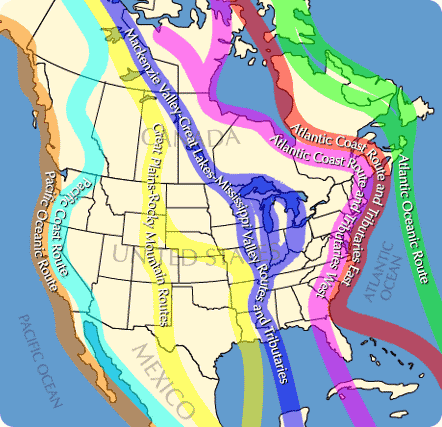 | |
|
In North America, migratory routes generally begin in a wide range and narrow down as birds move from the North to their wintering range in the South. Scientists have identified seven general routes for the southern migration of birds through the United States (the routes returning northward are not as well known):
While certain birds consistently follow a particular path to and from their wintering and breeding areas, the term "migratory route" or "flyway" refers to the general course that birds follow, rather than an exact path followed by individual birds. The migratory routes identified in this section are generalized routes in which a heavy concentration of birds is more noticeable. In reality, different groups or species of birds may fly part of their journey on one route and cross over to another route or through an area that is not identified as a route on the map.
The migration route that extends from the Mackenzie Valley in northwestern Canada, past the Great Lakes and down the Mississippi Valley is the longest of the Western Hemisphere routes. This 3,000-mile migration route is uninterrupted by mountains and its woodlands and sufficient water supply provide ideal conditions for migrating birds. This route contains the Mississippi Flyway that brings 7 million migrants through Chicago each year. | |
